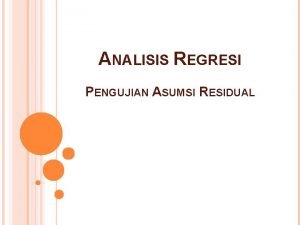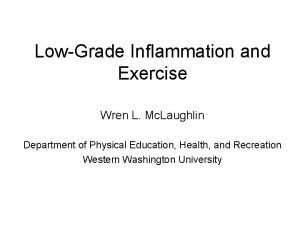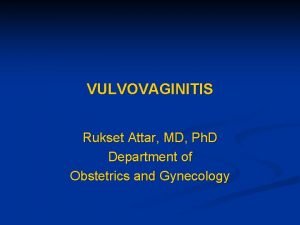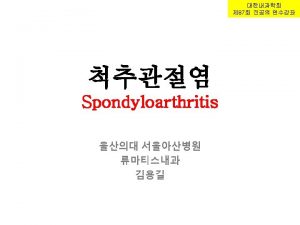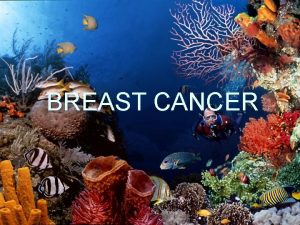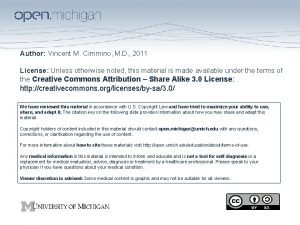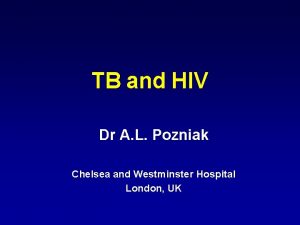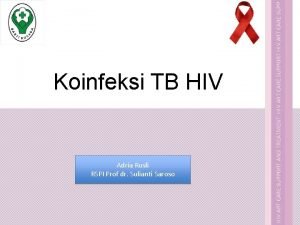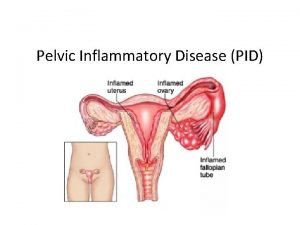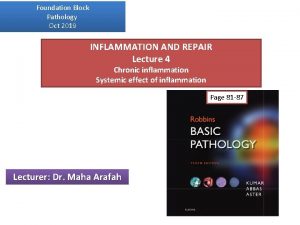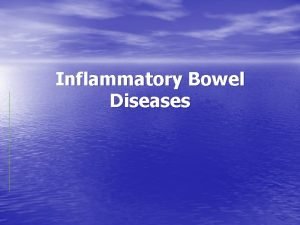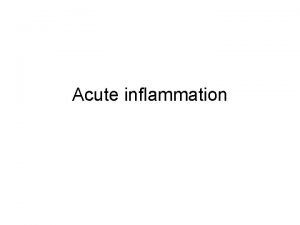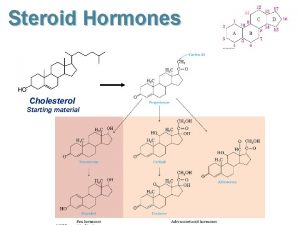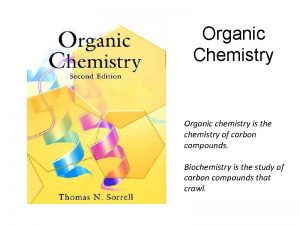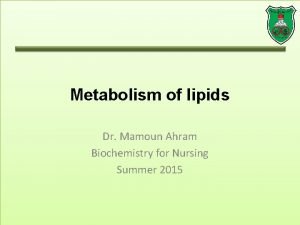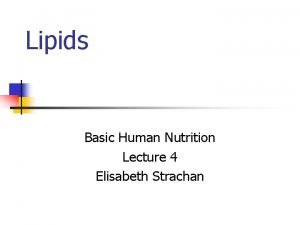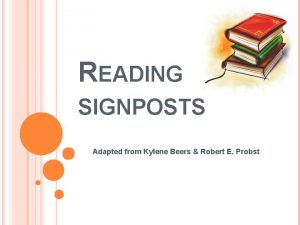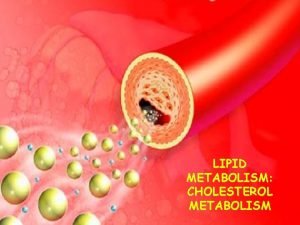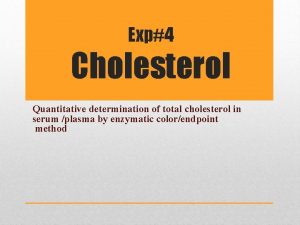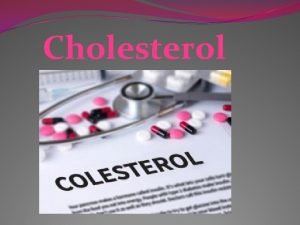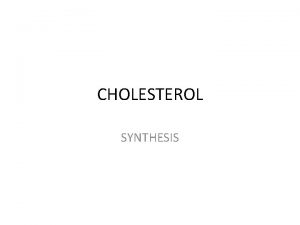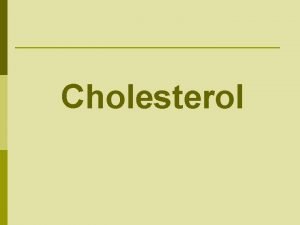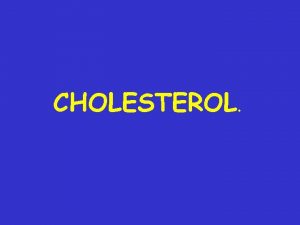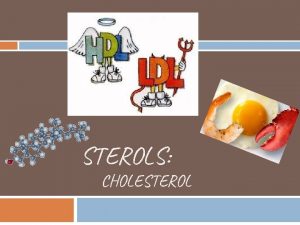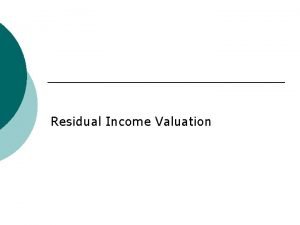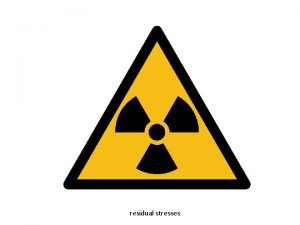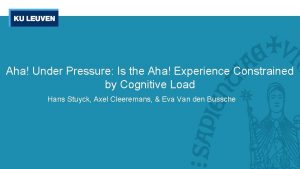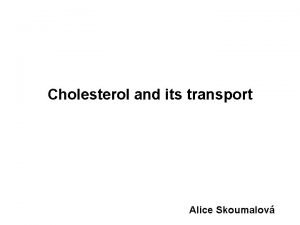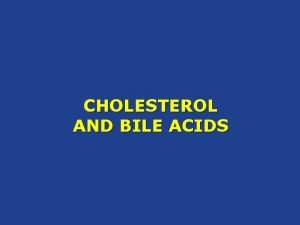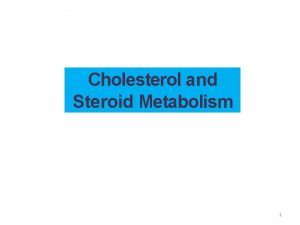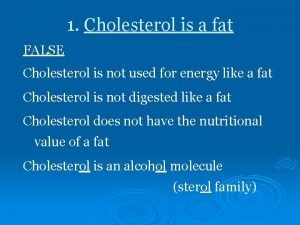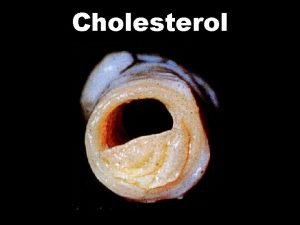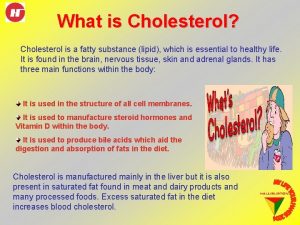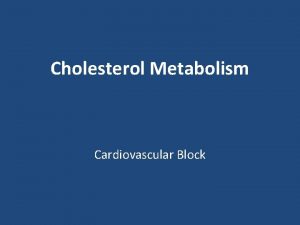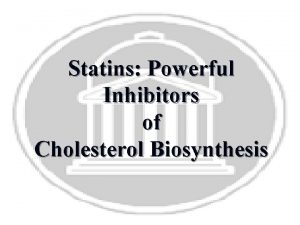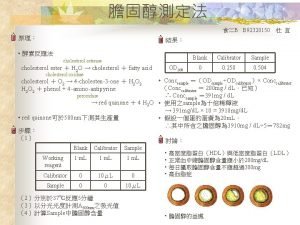AHA 2017 Residual Inflammatory Risk and Residual Cholesterol

























- Slides: 25

AHA 2017 Residual Inflammatory Risk and Residual Cholesterol Risk: Critical Analysis from CANTOS Relationship of CRP Reduction to Cardiovascular Event Reduction Following Treatment with Canakinumab Paul M Ridker MD, Jean Mac. Fadyen BS, Brendan Everett MD, Peter Libby MD, Tom Thuren MD, and Robert Glynn, Ph. D on behalf of the worldwide investigators and participants in the Canakinumab Anti-Inflammatory Thrombosis Outcomes Study (CANTOS) Embargo lifts Mon. , Nov. 13, 9 a. m. PT

Can Inflammation Reduction, in the Absence of Lipid Lowering, Reduce Cardiovascular Event Rates?

From CRP to IL-6 to IL-1: Moving Upstream to Identify novel Targets for Atheroprotection Ridker PM. Circ Res 2016; 118: 145 -156.

Libby P. Interleukin-1 Beta as a Target for Atherosclerosis: Biologic Basis for CANTOS and Beyond. JACC 2017 (October 31, 2017)

Canakinumab Anti-inflammatory Thrombosis Outcomes Study (CANTOS) Stable CAD (post MI) Residual Inflammatory Risk (hs. CRP > 2 mg/L) Randomized Canakinumab 50 mg SC q 3 months Randomized Canakinumab 150 mg SC q 3 months Randomized Canakinumab 300 mg SC q 3 months N = 10, 061 39 Countries April 2011 - June 2017 1490 Primary Events Randomized Placebo SC q 3 months Primary Endpoint: Nonfatal MI, Nonfatal Stroke, Cardiovascular Death (MACE) Secondary Endpoint: MACE plus Unstable Angina Requiring Urgent Revascularization (MACE+) Additional Adjudicated Endpoints: Cancer, Infection Ridker PM et al. N Engl J Med. 2017; 377: 1119 -31

CANTOS: Primary Cardiovascular Endpoints Placebo SC q 3 months Canakinumab 150/300 mg SC q 3 months HR 0. 85 95%CI 0. 76 -0. 96 P = 0. 007 MACE - Plus HR 0. 83 95%CI 0. 74 -0. 92 P = 0. 0006 Cumulative Incidence (%) MACE 0 Follow-up Years 1 2 3 4 5 Follow-up Years 35 - 40% reductions in hs. CRP and IL-6 No change in LDLC Ridker PM et al. N Engl J Med. 2017; 377: 1119 -31

Residual Inflammatory Risk: Addressing the Obverse Side of the Atherosclerosis Prevention Coin Ridker PM. Eur Heart J 2016; 37: 1720 -22 Known Cardiovascular Disease LDL 150 mg/d. L hs. CRP 4. 5 mg/L High Intensity Statin “Residual Cholesterol Risk” “Residual Inflammatory Risk” LDL 110 mg/d. L hs. CRP 1. 8 mg/L LDL 70 mg/d. L hs. CRP 3. 8 mg/L Additional LDL Reduction Additional Inflammation Reduction FOURIER/SPIRE PCSK 9 Inhibition SC q 2 weeks 15% RRR CANTOS Canakinumab 150 -300 mg SC q 3 months 15%RRR

How Common is Residual Inflammatory Risk? IMPROVE-IT Residual Inflammatory Risk hs. CRP > 2 mg/L LDLC < 70 mg/d. L Residual Cholesterol Risk hs. CRP < 2 mg/L LDLC > 70 mg/d. L Ridker PM. Circulation Res 2017; 120: 617 -9. Both hs. CRP > 2 mg/L LDLC > 70 mg/d. L Neither hs. CRP < 2 mg/L LDLC < 70 mg/d. L

CANTOS: Critical Unanswered Clinical Questions Monoclonal Antibodies and the Era of Personalized Medicine Can we predict who benefits the most from effective but expensive treatments? Is there an easily identified clinical subgroup for whom benefits are large and might clearly outweigh hazards? Is there an easily identifiable subgroup where there is evidence not only of reduced MACE, but also of reduced cardiovascular mortality and reduced all-cause mortality? Is there an easily identified clinical subgroup for whom benefits are small and may not justify the hazards? These biologically directed questions have broad implications for patient selection, for cost-effectiveness, for calculations of the number-needed-to-treat (NNT), and ultimately for personalized medicine, allowing us to get the right drug to the right patient, thus maximizing benefits while reducing costs as well as hazards.

CANTOS: Critical Unanswered Clinical Questions Monoclonal Antibodies and the Era of Personalized Medicine. Can we predict who benefits the most from effective but expensive treatments? Two Analytic Approaches Applied to CANTOS: 1. Evaluate whethere are baseline clinical characteristics that can be used to define patient groups more or less likely to benefit from treatment with canakinumab. 2. If not, evaluate whether we can use evidence of biologic drug response to define patient groups more or less likely to benefit from treatment with canakinumab.

CANTOS : Consistency of Effect Across All patient Groups Defined By Baseline Clinical Characteristics MACE Group MACE Plus Women Men Age < 60 yrs Age > 60 yrs Diabetes No diabetes Non Smoker BMI < 30 kg/m 2 BMI > 30 kg/m 2 LDLC < 80 mg/d. L LDLC > 80 mg/d. L hs. CRP > 2 to <4 mg/L hs. CRP > 4 mg/L HDLC > 45 mg/d. L HDLC < 45 mg/d. L TG < 150 mg/d. L TG > 150 mg/d. L Overall 0. 5 Canakinumab Superior 1. 0 Canakinumab Inferior

Interleukin-1 b Inhibition with Canakinumab Can we use evidence of individual biologic drug response to define patient groups more or less likely to benefit from treatment with canakinumab? Can we use the magnitude of reduction (or level achieved) of hs. CRP or interleukin-6 following treatment with canakinumab to identify individual patients most likely to benefit? Perform a series of sensitivity analyses to address the robustness of any informative findings.

CANTOS: Greater Risk Reduction Among Those With Greater hs. CRP Reduction (MACE) Placebo On-treatment hs. CRP > 2 mg/L On-treatment hs. CRP < 2 mg/L MACE 25% reduction in risk for those achieving hs. CRP < 2 mg/L 5 % reduction in risk for those achieving hs. CRP > 2 mg/L (No change in LDL cholesterol)

CANTOS Sensitivity Analysis I : Multivariate Adjustment* for Potential Confounding Factors Related to On-Treatment hs. CRP Has Minimal Impact On-treatment hs. CRP Threshold Placebo Canakinumab On-treatment hs. CRP above threshold Canakinumab On-treatment hs. CRP below threshold hs. CRP < or > clinical cutpoint (2 mg/L) 1. 0 Referent 0. 90 0. 79 -1. 02 0. 11 0. 75 0. 66 -0. 85 <0. 0001 HR (adjusted) 95% CI P *HRs adjusted for age, gender, smoking, HTN, diabetes, BMI, baseline hs. CRP, Baseline LDLC

CANTOS Sensitivity Analysis II : Choice of Alternative Thresholds for On-treatment hs. CRP Has Minimal Impact On-treatment hs. CRP Threshold Placebo Canakinumab On-treatment hs. CRP above threshold Canakinumab On-treatment hs. CRP below threshold hs. CRP < or > clinical cutpoint (2 mg/L) HR (adjusted) 95% CI P 1. 0 Referent 0. 90 0. 79 -1. 02 0. 11 0. 75 0. 66 -0. 85 <0. 0001 hs. CRP < or > median (1. 8 mg/L) HR (adjusted) 95% CI P 1. 0 Referent 0. 90 0. 79 -1. 02 0. 10 0. 73 0. 64 -0. 84 <0. 0001 hs. CRP > or < 50 % reduction HR (adjusted) 95% CI P 1. 0 Referent 0. 87 0. 76 -1. 00 0. 05 0. 81 0. 71 -0. 91 0. 0008 hs. CRP > or < Median % reduction HR (adjusted) 95% CI P 1. 0 Referent 0. 86 0. 75 -0. 98 0. 02 0. 80 0. 70 -0. 92 0. 001 HRs adjusted for age, gender, smoking, HTN, diabetes, BMI, baseline hs. CRP, Baseline LDLC

CANTOS Sensitivity Analysis III. Cardiovascular Outcomes According to On-treatment Tertiles of hs. CRP Measured After the Initial dose of Canakinumab (MACE) Placebo Tertile 1 (hs. CRP>2. 6 mg/L) Tertile 2 (hs. CRP >1. 2 -<2. 6 mg/L) Tertile 3 (hs. CRP <1. 2 mg/L) MACE 29% reduction for those achieving lowest hs. CRP tertile 17 % reduction for those achieving middle hs. CRP tertile 1 % reduction for those achieving highest hs. CRP tertile (No change in LDL cholesterol)

CANTOS Sensitivity Analysis V: Multivariable Adjusted Hazard Ratios for Additional Pre-Specified Cardiovascular Outcomes According to On-treatment hs. CRP Levels Above or Below 2 mg/L After Drug Initiation Clinical Outcome Placebo Canakinumab (N = 3182) On-treatment hs. CRP > 2 mg/L hs. CRP < 2 mg/L (N = 2868) (N = 3484) MACE HR (adjusted) 95% CI P 1. 0 Referent 0. 90 0. 79 -1. 02 0. 11 0. 75 0. 66 -0. 85 <0. 0001 MACE - Plus HR (adjusted) 95% CI P 1. 0 Referent 0. 91 0. 81 -1. 03 0. 14 0. 74 0. 66 -0. 83 <0. 0001 CV Death HR (adjusted) 95% CI P 1. 0 Referent 0. 99 0. 82 -1. 21 0. 95 0. 69 0. 56 -0. 85 0. 0004 All-Cause Mortality HR (adjusted) 95% CI P 1. 0 Referent 1. 05 0. 90 -1. 22 0. 56 0. 69 0. 58 -0. 81 <0. 0001 HRs adjusted for age, gender, smoking, HTN, diabetes, BMI, baseline hs. CRP, Baseline LDLC

CANTOS Sensitivity Analysis VI: Consistent Effects at All Doses of Canakinumab (MACE) Canakinumab Dose Placebo Canakinumab On-treatment hs. CRP > 2 mg/L Canakinumab On-treatment hs. CRP < 2 mg/L 50 mg SC q 3 months HR (adjusted) 95% CI P 1. 0 Referent 0. 96 0. 80 -1. 14 0. 63 0. 78 0. 63 -0. 96 0. 02 150 mg SC q 3 months HR (adjusted) 95% CI P 1. 0 Referent 0. 86 0. 71 -1. 04 0. 11 0. 75 0. 62 -0. 91 0. 003 300 mg SC q 3 months HR (adjusted) 95% CI P 1. 0 Referent 0. 87 0. 71 -1. 07 0. 18 0. 74 0. 62 -0. 88 0. 0009 HRs adjusted for age, gender, smoking, HTN, diabetes, BMI, baseline hs. CRP, Baseline LDLC The proportions of those treated who achieved hs. CRP levels < 2 mg/L were 44%, 55%, and 65% in the 50 mg, 150 mg, and 300 mg canakinumab groups, respectively.

CANTOS Sensitivity Analysis VII: Similar Results Observed in a Causal Inference Analysis Which Modelled Potential Outcomes Using Baseline Covariates for Individual Patients Treated With Canakinumab Had They Counterfactually Been Allocated to Placebo (and then Comparing the Modelled Effects to the Observed Effects) Canakinumab Dose Canakinumab On-treatment hs. CRP > 2 mg/L Canakinumab On-treatment hs. CRP < 2 mg/L 150 mg SC q 3 months HR (counterfactually modelled) 95% CI 0. 90 0. 75 -1. 07 0. 76 0. 64 -0. 91 300 mg SC q 3 months HR (counterfactually modelled) 95% CI 0. 93 0. 74 -1. 04 0. 80 0. 69 -0. 96

3. 0 CANTOS: Additional Non-Cardiovascular Clinical Benefits Incident Lung Cancer Placebo Canakinumab 50 mg Canakinumab 150 mg Canakinumab 300 mg HR 1. 0 0. 77 0. 61 0. 33 (95%CI) (referent) (0. 49 -1. 20) (0. 39 -0. 97) (0. 18 -0. 59) P (referent) 0. 25 0. 034 0. 00008 2. 0 1. 0 0. 0 Cumulative Incidence (%) P-trend across groups = 0. 0003 0 1 2 3 4 5 Follow-up Years Ridker PM et al. Lancet. 2017; 390: 1833 -1842

CANTOS: Greater Risk Reduction for Incident Lung Cancer With Greater hs. CRP Reduction Lung Cancer 71% reduction for those achieving hs. CRP below median No significant benefit for those achieving hs. CRP above median Placebo On-treatment hs. CRP Above Median On-treatment hs. CRP below median

CANTOS : Adverse Effects Incidence Rates of Fatal Infection are Not Related to On-Treatment Levels of hs. CRP Clinical Outcome Placebo (N = 3182) Canakinumab On-treatment hs. CRP > 2 mg/L (N = 2868) Canakinumab On-treatment hs. CRP < 2 mg/L (N = 3484) Fatal Infection Incidence rate (per 100 person years) 0. 18 0. 35 0. 27

Conclusions: The Canakinumab Anti-Inflammatory Thrombosis Outcomes Study (CANTOS) 1. Overall, CANTOS demonstrates that targeting the IL-1 b to IL-6 pathway of innate immunity with canakinumab reduces cardiovascular event rates and potentially reduces rates of incident lung cancer and lung cancer mortality. 2. CANTOS thus provides critical proof-of-concept that inflammation inhibition, in the absence of lipid lowering, can improve atherothrombotic outcomes. It has been uncertain, however, if there are patient groups where the benefits of treatment clearly outweigh potential hazards. 3. The current analysis suggests that the magnitude of hs. CRP reduction following a single dose of canakinumab may provide a simple clinical method to identify individuals most likely to accrue the largest cardiovascular and cancer benefits from continued treatment.

Conclusions: The Canakinumab Anti-Inflammatory Thrombosis Outcomes Study (CANTOS) 4. For example, among those who achieved levels of hs. CRP <2 mg/L after a single dose of canakinumab, continued long-term treatment was associated with a 25% reduction in MACE (P<0. 0001), a 31% reduction in cardiovascular mortality (P=0. 0004) and a 31% reduction in all-cause mortality (P<0. 0001). By contrast, effects were smaller in magnitude and non-significant for all of these endpoints among those with a less profound inflammatory response. 5. The differential outcomes observed in CANTOS on the basis of achieved hs. CRP concentration were robust to the choice of on-treatment measures, were minimally affected by adjustment for baseline clinical characteristics, were observed at all individual canakinumab doses, and were consistent in causal inference analyses.

Conclusions: The Canakinumab Anti-Inflammatory Thrombosis Outcomes Study (CANTOS) 6. We believe these observations have clinical importance not only for the pathophysiology of inflammation and future drug development, but also for patient selection, cost-effectiveness, and personalized medicine. 7. For example, the 5 -year number-needed-to-treat (NNT) for the endpoint of myocardial infarction, stroke, coronary revascularization, or death from any cause was 16 among those with on-treatment concentrations of hs. CRP <2 mg/L. By contrast, the 5 -year NNT was 57 for those treated with canakinumab who did not achieve this inflammation threshold. 8. The main hazard of canakinumab – a small but statistically significant increase in fatal infection – was not related to on-treatment hs. CRP levels. As such, the use of biologic response to canakinumab may also provide a simple selection tool to maximize benefit without increasing clinical hazard. 9. Details of the CANTOS hs. CRP reduction data are available on-line today at The Lancet. org.
 Residual risk and secondary risk pmp
Residual risk and secondary risk pmp Asumsi analisis regresi
Asumsi analisis regresi Market risk credit risk operational risk
Market risk credit risk operational risk Pro and anti inflammatory
Pro and anti inflammatory Desquamative inflammatory vaginitis
Desquamative inflammatory vaginitis Mechanical vs inflammatory pain
Mechanical vs inflammatory pain Maxillofacial area inflammatory diseases
Maxillofacial area inflammatory diseases Inflammatory breast cancer pictures
Inflammatory breast cancer pictures Treatment of inflammatory breast cancer
Treatment of inflammatory breast cancer Post inflammatory erythema
Post inflammatory erythema Immune reconstitution inflammatory syndrome
Immune reconstitution inflammatory syndrome Predeksihkhariini
Predeksihkhariini Pelvic inflammatory disease men
Pelvic inflammatory disease men Pelvic girdle pain
Pelvic girdle pain Inflammatory cells
Inflammatory cells Iliocolitis
Iliocolitis Pus formation
Pus formation Steroids and cholesterol
Steroids and cholesterol Sex and cholesterol
Sex and cholesterol Good and bad cholesterol
Good and bad cholesterol Good and bad cholesterol
Good and bad cholesterol Non polar molecules that include fats oils and cholesterol
Non polar molecules that include fats oils and cholesterol Notice and note strategies
Notice and note strategies Signposts in reading
Signposts in reading Cholesterol precursor
Cholesterol precursor How is total cholesterol calculated
How is total cholesterol calculated

